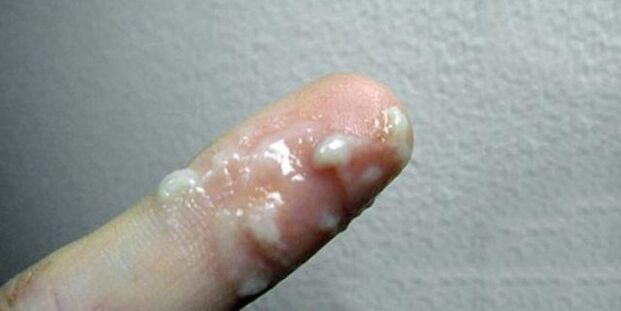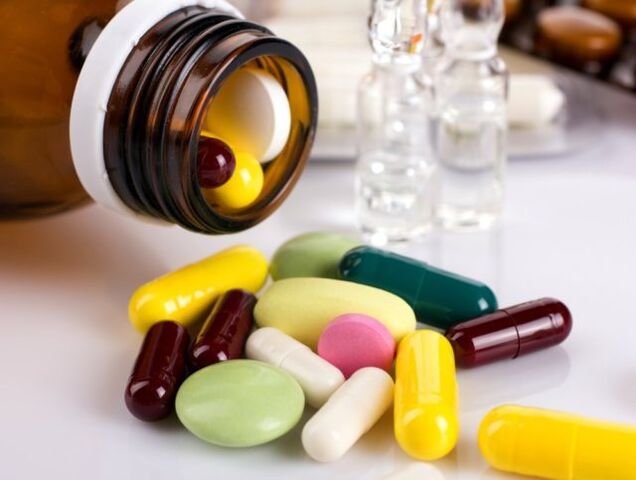As long as the human body, and especially the man's, does not fail and does not signal poor health with pain in any part of it, it seems that this representative of the stronger sex will always be young and healthy, and minor ailments and painful symptoms will go away by themselves. But, as statistics show, the first signs of prostatitis in men appear insignificantly and, accordingly, are ignored by the men themselves, which ultimately entails rather serious consequences. What needs to be done at the first manifestations and signals of the development of prostatitis, how to prevent an exacerbation of the nature of the disease and prevent undesirable consequences - we will consider later in this article.
General information
According to statistics, prostatitis is the most common purely male urological disease, which is an inflammation of such a component of the reproductive system as the prostate gland, located below the bladder. Simply put, the prostate is located near the urinary tube, covering it. Inflammation of the prostate provokes its enlargement, as a result of which it presses on the urinary canal, reduces the lumen in it, which prevents the bladder from emptying completely when urinating.
Several decades ago, prostatitis was considered a disease of mature age, since this disease was observed in the stronger sex after 45 years, whereas today signs of inflammation of the prostate can appear even in young (under 30) men.
The prostate gland in a man's body performs the following functions:
- produces a secret that makes the sperm more fluid, and helps to increase the duration of sperm activity;
- produces prostaglandins and other active substances and hormones;
- provides a sufficient rate of sperm release;
- protects the sperm from getting into it urine.
The main problem that appears as a result of the development of prostatitis is that with an increase in the volume of the gland itself, an increasing amount of urine remains after urination in the bladder and poisons the man's body. Therefore, even minor symptoms of inflammation should not be ignored, so as not to trigger the disease to more serious consequences.
Causes
The results of long-term clinical studies have made it possible to identify the main causes of the disease and the groups of people suffering from prostatitis most often.
So, the risk group includes men:
- working sitting for a long time, as well as leading a sedentary lifestyle;
- are overweight;
- having promiscuous sexual intercourse, the consequences of which may be damage by sexually transmitted infections;
- suffering from frequent constipation, which provoke the spread of microorganisms and bacterial inflammation of the prostate;
- undergoing excessive stress on the groin muscles due to injury or occupational reasons, such as drivers;
- susceptible to frequent hypothermia, hormonal disruptions, as well as those whose sex life is not regular.
Signs of prostatitis in men
Any serious disease warns of its initial stage of development with certain signals. If you do not take them into account and do not seek the advice of a specialist in time, you can lose precious time that can be used to treat the disease at the very beginning.
Often, the disease proceeds without definite signs, passing without proper attention to a chronic form that is difficult to treat.
With certain signals, it warns of its initial stage of development of any serious disease
But if a person is attentive to the changes occurring to him, he will certainly notice the initial symptoms of inflammation in the following manifestations of prostatitis in men:
- Frequent nightly urge to urinate.
- The process of emptying the bladder itself is difficult, with a characteristic weak pressure, intermittent or split stream, painful and longer than its normal course.
- A man feels a burning sensation when urinating, after which a feeling of full bladder remains.
- Painful sensations during bowel movements.
- Decreased quality of erection, fatigue, nocturnal involuntary erections.
- Feeling chills due to increased body temperature.
- Highlighting a specific color.
Symptoms of prostatitis
Prostatitis caused by microorganisms (bacterial) can usually occur in acute and chronic forms, each of which is distinguished by the presence of special symptoms:
- if prostatitis is observed in an acute form, then a significant increase in body temperature is a frequent occurrence, pain extends not only to the prostate area, but also radiates to the groin and even to the lumbar region, men note the presence of difficult and frequent urination, a decrease in libido;
- chronic course of prostatitis is characterized by characteristic pain in the pelvic and perineum, the presence of blood clots in the semen and painful ejaculation, frequent nighttime urge to urinate, which is accompanied by burning and pain.
What is the peculiarity of acute and chronic inflammation?
Acute prostatitis is much less common than chronic prostatitis. A feature of the manifestation of the acute form of the disease is a characteristic severe pain, dislocated in the perineum and intensifying during urination and defecation. In addition, there may be a lingering discharge from the urinary canal and a decrease in erection. The temperature may rise up to 38-39 degrees. In severe cases, with acute urinary retention, serious intoxication of the body is possible.
Chronic prostatitis has symptoms similar to other urological diseases, and sometimes even asymptomatic. But it can be recognized by mild and fast-passing pain in the perineum, as well as in the groin and pubic region. The duration and quality of intercourse significantly changes, and during morning urination, a sediment in the form of white flakes may be present in the urine. There may be a characteristic discharge after emptying the bladder.
Consequences
If you do not identify a disease such as prostatitis, and do not start its timely treatment, the consequences can be very deplorable - from violations of the patient's usual lifestyle, provoked by dependence on the toilet, constant unpleasant and painful sensations, intoxication due to poisoning with the products of the body's own vital activity contained instagnant urine, up to significant disturbances in the genital area, up to impotence and infertility.

In addition, prostatitis in a man reduces the quality of sperm and, as a result, the likelihood of conception. Pathological processes occurring in the prostate gland can cause its abscess, renal failure and inflammation of other organs of the genitourinary system.
Pain syndrome
In whatever form prostatitis proceeds, this process is necessarily accompanied by pain syndrome, and the pain often radiates to the scrotum, sacrum, abdomen, back and pelvic region. The prostate itself cannot give such severe pain, but the nerve endings of other pelvic organs react sharply to the inflammatory processes localized in it.
Specific discharge
Discharge from the urinary canal with prostatitis can be of the following types:
- Milky in color, thick in consistency discharge - signal the development of an inflammatory process in the prostate gland.
- Uncontrolled discharge of sperm from the urethra - indicates the transition of prostatitis to a chronic form or the development of other diseases of the genitourinary system.
- Purulent discharge appears with a sluggish prostatitis, but in combination with an elevated temperature is a symptom of the transition of the disease into an acute form.
- Purulent discharge with an admixture of mucus is observed in the presence of bacterial prostatitis caused by microorganisms, the infection of which occurs mainly through sexual contact.

Treatment of prostatitis
Complete cure of prostatitis is a rather lengthy process that requires an integrated approach. First, with the help of laboratory tests, diagnostics are carried out to determine the nature of the disease, ultrasound examinations, MRI and tomography are prescribed, with their help they clearly determine the presence of this particular disease, and not another with similar symptoms.
As soon as the diagnosis of prostatitis is confirmed, the urologist prescribes the necessary therapy, which includes:
- Medicines that improve blood circulation.
- Pain relief drugs.
- Anti-inflammatory drugs.
- If there are signs of intoxication, detoxification solutions and electrolytes are prescribed.
- Additional activities may include diet food, exercise therapy, and sedatives.
Surgical treatment is indicated only for prostate abscess or complete blockage of the outflow from the bladder.

How to treat prostatitis at home
Traditional methods of treating prostatitis include the use of natural remedies such as:
- Pumpkin seeds.
- Broth and enemas with it from chestnut peel.
- Tincture of ripe chestnut fruits.
- Freshly squeezed juices from carrots, beets, cucumbers, asparagus.
- Elderberry juice (black).
- Prostate massage.
But nevertheless, it should be remembered that such funds are auxiliary, the treatment process will be quite lengthy and must be supervised by a qualified urologist.
Prevention of prostatitis
Any man can carry out preventive measures independently:
- pay attention to physical activity, rationally alternate work, rest and physical activity;
- walk, and the more the better;
- adhere to the rules of a healthy diet and lifestyle;
- visit a doctor if even minor symptoms of the development of the disease appear;
- use contraceptives;
- men at risk not to carry weights, and also avoid excessive physical exertion;
- adhere to an orderly sex life.
Reviews
Forums devoted to various methods of treating prostate diseases are full of messages, the leitmotif of which is the same:
- the disease affects about 60 percent of men in adulthood (over 40);
- many of them constantly postpone a visit to a specialist, triggering the disease, as a result of which prostatitis becomes a chronic disease;
- pain signals that appear and the presence of characteristic discharge are often perceived as manifestations of sexually transmitted diseases and independently, and sometimes on the advice of friends, take medications, although they know for sure that it is better to consult a specialist;
- almost all have erectile dysfunction, decreased sex drive and sexual dysfunction.



















